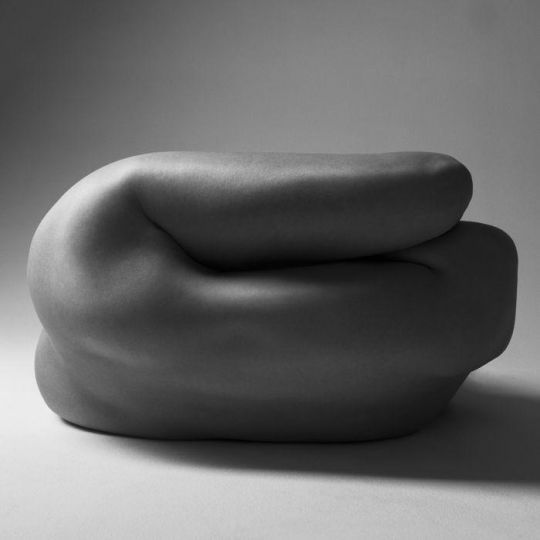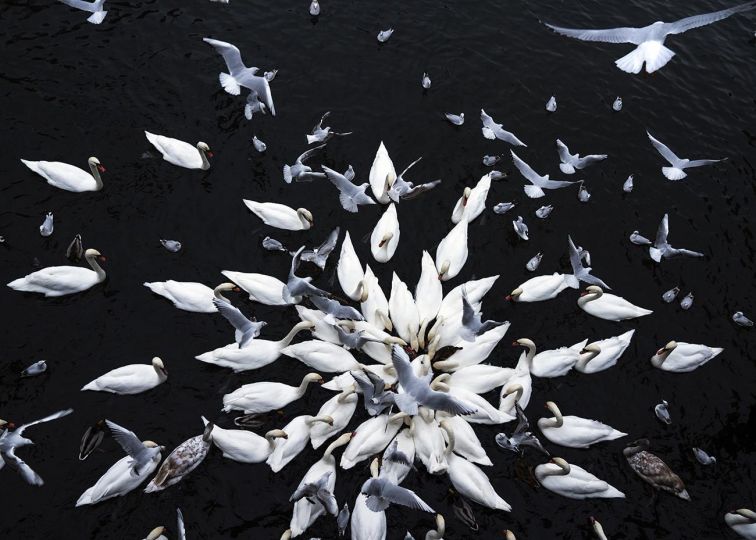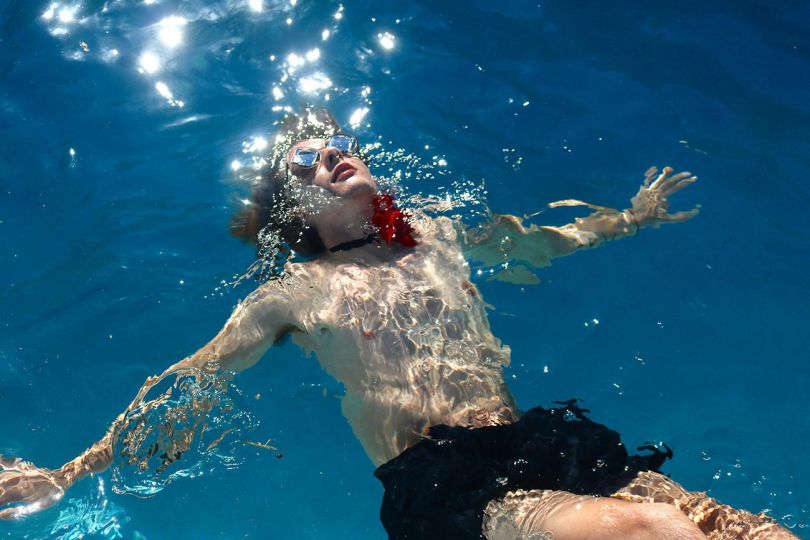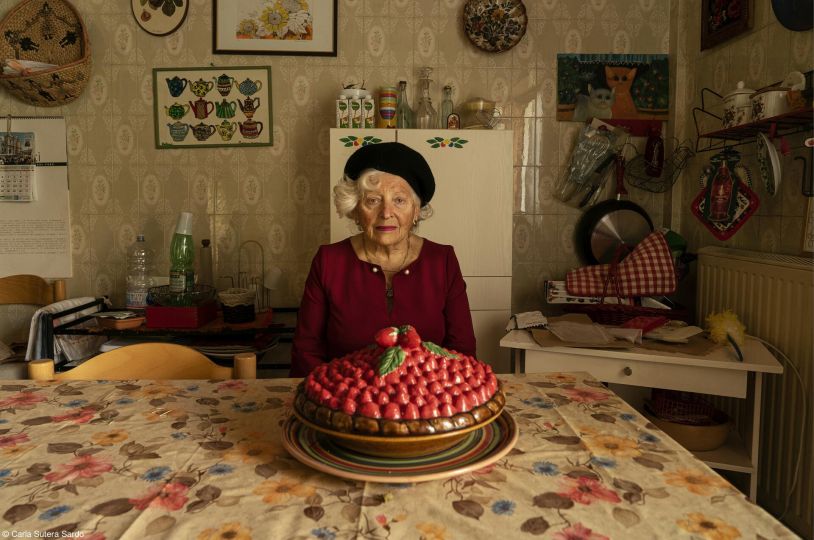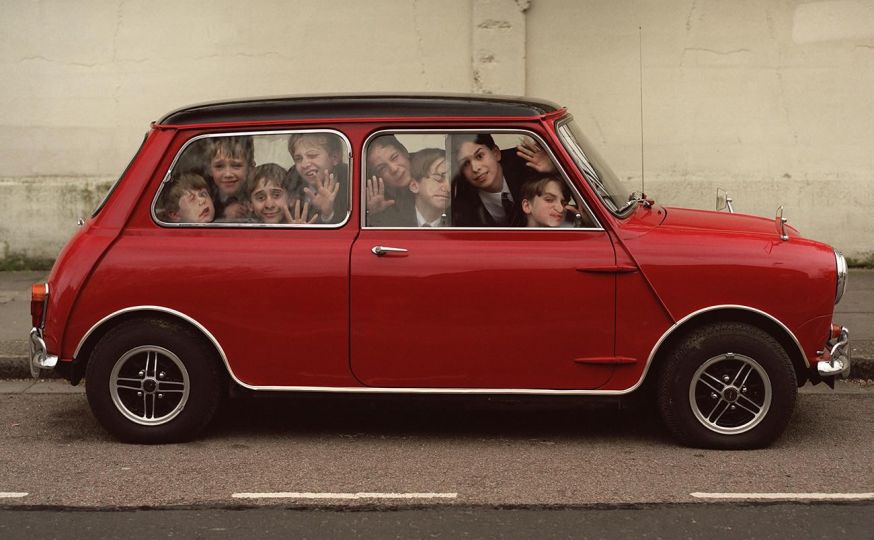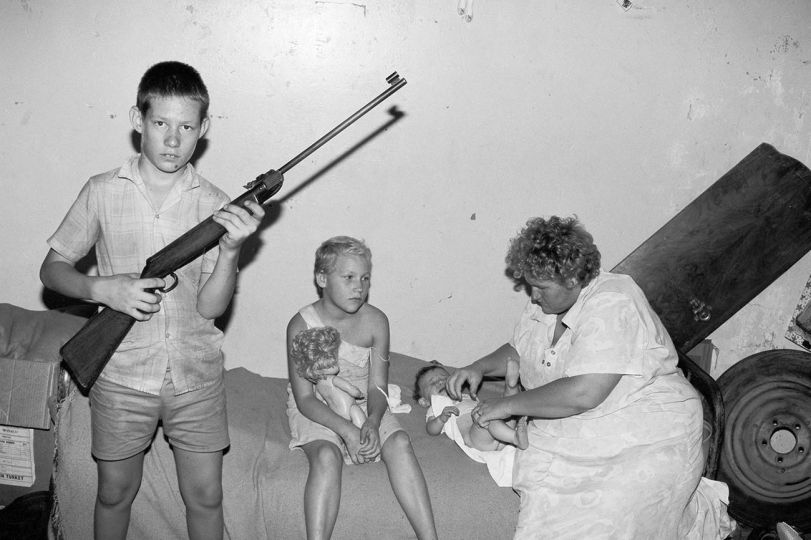This Wednesday, January 29th, 2019, the film “Histoire d’un Regard” by director Mariana Otero was released in theaters. This first-person documentary searches, with much emotion and precision, the work of a brilliant photographer who has become a myth: Gilles Caron. A must see.
Death often travels slowly through a plain of suffering and despair, before striking. So she mowed down my friends and colleagues Luc Bernard (1), Mark Grosset (2), Michel Baret (3) and Gérard-Aimé (4). At other times, it strikes brutally through a broken artery for Luc Decousse (5), or with a mortar fire for Rémi Ochlik (6) in Syria. Sometimes she stammers: injured on Friday, blown away but saved on Saturday and death on Monday for Lucas Dolega (7).
But death also knows how to camouflage itself, to take a pseudo as it was the case on April 5th, 1970 for the photographer of the Gamma press agency, Gilles Caron went missing. Wounded, gobbled up, exploded, deceased, we are in the concrete, in the real, but he has disappeared…
Disappeared, it is the door left ajar to the beyond through which hope sneaks. Terrible. Unimaginable the shock felt by Marianne Caron, his young wife mother of their two little girls. Also unimaginable today is the silence that surrounded this fact drowned in the disappearance of a dozen other journalists in the Cambodian conflict. Some news in the press, but Gilles Caron is not yet the star, the James Dean of photojournalism that he has since become, thanks to the work of the Gilles Caron Foundation, to that of the historian Michel Poivert, and to this movie. Books and exhibitions have taken his immense talent out of the professional circle to reach a larger audience.
But in 1970, a press photographer, reporter photographer – the American term photojournalist is not yet familiar – is considered a technician, an information craftsman. Colleagues from the written and audiovisual press often ignore the reality of this work and that of photographic agencies. And then, let us dare say it, there is then like an embarrassment around the wounded and killed in the exercise of the profession. Being injured or killed is not professional misconduct, but almost. We are far from celebrating their memory at the Bayeux memorial!
It was only by a judgment of September 22, 1978 that “the court said and declared that on April 5, 1970 on colonial road No. 1 Phnom Penh – Saigon (Cambodia) died Gilles Edouard Denis Caron”. There is the pain of the family, of Marianne Caron in particular, but behind the machismo of the time particularly prevalent in the press, those who founded with Gilles Caron the press agency Gamma, the Hubert Henrottes, Hugues Vassal , Raymond Depardon are destabilized. This disappearance and the uncertainty of Caron’s fate weighed heavily in May 1973 in the conflict between associates which led to the rebellion of the photographers and to the departure of Hubert Henrotte and the birth of a new agency: Sygma.
Raymond Depardon, certainly the most affected, remained with Gamma, which he left to join Magnum in 1978, the year when Gilles Caron was declared officially deceased. It is not a coincidence.
Floris de Bonneville, who was the editor and friend of Gilles Caron, testifies to Depardon’s grief, as did Jérôme Hinstin his assistant. “When I arrived at Gamma three years after his disappearance, there was still a kind of constant worry. I did not know Caron personally but I remembered seeing him working at the university of Nanterre in 68. I could see this guy not very tall, with curly hair, very lively, like a squirrel. Depardon spent years looking for information to find out what had happened to him. In vain. (8) ”
50 years later, the emotion is still present for all those who have known the photographer from near and far. Mariana Otero, the director of the film “Histoire d’un regard” was touched as soon as she leafed through the “Scrapbook”, the first work produced by the Gilles Caron Foundation in 2012. By bringing together all – or almost all – the films and contact sheets, the Foundation has updated the incredible talent of the photographer. Of the 36 views in each film, almost all of the images are good. There is little waste.
The work collected allowed Mariana Otero to build a film on some of Gilles Caron’s best known photos. Mariana’s camera explores Biafra, the six-day war in Israel and of course the iconic photo of Daniel Cohn-Bendit better known in 68 by the serigraphed posters of the Atelier des Beaux-Arts than by the little quarter-page published in Paris Match. With this documentary film, we follow step by step Gilles Caron, who arrived at the same time as the Israeli troops in Jerusalem. Professional photographers may find this anecdotal, but this lively approach gives flesh to these archives, and brings to life a great reporter for the public.
Michel Puech
(1) Luc Chiche dit Luc Bernard born in 1947 in Algiers and died in Paris on August 22, 2002, is a French journalist, writer and director. He collaborated in Combat, La Croix, L’Evènement du Jeudi and Marianne.
(2) Mark Spencer Grosset was born on January 7, 1957. He is the son of Barbara and Raymond Grosset who relaunched the Rapho agency after the war. Mark Grosset worked in photo agencies Imapress, Sipa Press, La Compagnie des Reporters, Black Star France. He became director of the Rapho agency before founding Mark Grosset Photographies. He died in 2006.
(3) Michel Baret born October 2, 1946 died Wednesday August 29, 2012 He was a journalist, press photographer since 1966, co-founder of the NS Rush news agency and member of the Rapho agency. Its archives are distributed by the Gamma-Rapho agency.
(4) Gérard Bois dit Gérard-Aimé was born on September 18, 1943 in Livron (Drôme) and died on May 11, 2018 in Valence (Drôme). Photojournalist, he collaborated with the agency APIS, at the Boojum Consort, he was co-founder of the press agency Fotolib (1972-1980) and Rapho.
(5) Jean-Baptiste Guigiaro dit Luc Decousse, journalist for La Marseillaise.
(6) Rémi Ochlik, born October 16, 1983 in Thionville (France) and died February 22, 2012 in Homs (Syria). Photojournalist co-founder of IP3 Press.
(7) Lucas von Zabiensky Mebrouk Dolega was born on August 19, 1978, photojournalist at the European Pressphoto Agency (EPA). On January 14, 2011, he covered a demonstration in Tunis when he was hit by a tear gas canister. Transported to the hospital, he died on January 17. He is buried in the Père-Lachaise cemetery (44th division).
(8) Interview with Jérôme Hinstin November 12, 2019
The origin of the film by Mariana Otero
One day, while I was finishing the editing of A Ciel Ouvert, the scriptwriter Jérôme Tonnerre brought me a book on a photographer. Among the magnificent photographs, some were familiar to me but I had not retained the name of the one who had made them: Gilles Caron.
While leafing through the last pages of the book, I discovered that he had disappeared suddenly in Cambodia at the age of thirty and I was seized by the presence in one of his last rolls of film, of photos representing his two little girls. I found as in a mirror the drawings that my painter mother, Clotilde Vautier, had made of my sister and I children shortly before her death in 1968 when she, too, was barely thirty years old. These photos were like a call, an invitation to make a film.
I then wanted to meet the different members of his family, to understand what had happened to the research into the disappearance of Gilles Caron in Cambodia in 1970. I learned that they had been in vain and that it was useless to want to investigate on the spot. It was not on this side that the film could go.
And very quickly, the Caron Foundation made available to me the 100,000 digital photos taken by Gilles Caron in his dazzling career. Faced with this gigantic mass of photos, I began by taking an interest in the reportage from which the famous photo of Cohn-Bendit facing a policeman in 1968 came from. I then tried to understand precisely what the journey of Caron had been in the few square meters he had crossed that day. I felt like I was with him behind his shoulder and it was then that the desire for the film became obvious, compelling.
Deciphering images to perceive through them the presence of their author, was something I had already explored in the film on my mother Story of a secret (2003). Histoire d’un gaze was born from this same desire to revive an artist from the images he left us and exclusively from them.
The preparation
I started by observing the contact sheets for all of his reports. I then realized that their numbering was random and that they had never been classified in the order in which they were taken. To understand Caron’s gaze, it was above all necessary that I put the rolls of each reportage in order. To make this classification and to reconstruct the movements of the photographer, I documented myself on each of the events and characters photographed, I immersed myself in the maps of the cities that Caron had traveled or, when the cities had changed, I went so far as to reconstruct their plan; I crossed the rolls made at the same time with different focal lengths; I relied on details that became real clues: shadows on the floor, a stain on a wall, an object in the hand of one of the characters …
This almost archaeological investigation and location work lasted several months and it allowed me to sharpen my gaze on the photos, to understand the paths both physical and interior of Gilles Caron, his questions, his discoveries, his doubts. Through this intense immersion, I felt like I was by his side, reliving these moments with him, and more importantly, perceiving something of his choices as a photographer.
Writing
To write the film, I obviously had to distance myself from these hundreds of information, anecdotes, each as interesting as the other and with the 100,000 photographs observed. What guided me and my co-screenwriter Jérôme Tonnerre in writing and structuring the film was my desire to breathe new life into the eyes of Gilles Caron.
Caron did not study photography but despite this, he quickly became a great photographer. Because of his general, artistic and political culture, because of his physical qualities, also because as a former Algerian war conscript he knew how to find his place in conflict situations. But what made his talent, his specificity, is his look on people, his way of grasping the uniqueness of individuals far beyond the events of which they were the protagonists. From his first reports, he made extremely strong photos which were published everywhere. He was quickly sent to places of major conflict and it was therefore on the ground that he was going to be confronted with all the major questions that the practice of photojournalism could generate. Gilles Caron was not a theorist and he did not have time to write about his experience, but his questions relating to his work are written in his photos, throughout his reportages.
This is why, to show his gaze, it seemed important to me to respect the chronology of his photos. One had to stay as close as possible to the privacy of his work, ask questions, “casually” without didactic analysis. It’s up to the spectators to go further, to extend the analysis based on the clues I was going to leave them.
A first-person narrative
As in my other films, it was for me to understand the other by immersing myself in his gaze and his way of seeing the world.
But what may have changed over the course of my work and which is increasingly influencing my storytelling mode, is the desire to highlight this shift in the gaze towards other. Because it is basically this trip which seems to me to be the artistic and political experience essential to live and to share with each of us. This is why since History of a secret, I have been more and more present in the image, with the voice or in the way of filming.
It is also for this reason that I wanted my investigation of Caron, my subjectivity to be present in the film through scenes and through my story. I just couldn’t imagine a movie that would have ignored my own gaze looking for his. And six months of work and rubbing shoulders with the images naturally led me to speak directly to the photographer and get to know him.
The form
From the writing of the screenplay, I wanted the way to meet the photographer and his photos to be different depending on the reportages and the emotions they aroused. This is why the narrative and visual devices change during the film.
For example I decided to go to Ireland to meet those whom Caron had photographed because I had the feeling that during this reportage he felt, more than other times maybe, in agreement with this struggle. Never had he taken so many photos in such a short time. So, always with this idea of following in his footsteps, I went to those whom fifty years earlier he had tried, more than usual, to approach.
This formal freedom was essential for me. I especially didn’t want a systematic editing. With the editor Agnès Bruckert, we have only given ourselves two rules. The first, which we have only very rarely deviated from, was not to betray the photographer’s framing. And the other is not to subject the photos to historical illustration, to journalistic information. The photos were supposed to bring Gilles Caron back to life, to his gaze, his desire and ultimately to embark on a story. It was, in my opinion, the fairest way to bring Caron’s work to life: there was a desire in him to build stories with characters, even at the heart of the most dramatic events. Through editing, sound processing and music, I wanted to highlight this narrative, cinematographic and romantic dimension that characterizes, in my opinion, the work and trajectory of Gilles Caron.
HISTOIRE D’UN REGARD
by Mariana Otero France – 1h33 – 2019
SYNOPSIS
Gilles Caron, when he was at the peak of a meteoric photojournalist career, suddenly disappeared in Cambodia in 1970. He was just 30 years old. From the thousands of photographs he has taken during the most significant events of his time, the director gives the photographer a presence and tells his story.
TECHNICAL SHEET
Direction Mariana Otero
Written by Mariana Otero in collaboration with Jérôme Tonnerre Produced by Denis Freyd
Editing Agnès Bruckert
Image Hélène Louvart (a.f.c.)
Taking his Martin Sadoux
Sound editing Raphaël Girardot
Nathalie Vidal mix
Original music Dominique Massa
Production manager Juliette Sol
Post production manager Cédric Ettouati
An Archipel 33 production
With the participation of the National Center for Cinematography and Animated Image In association with Diaphana, MK2 Films
In partnership with The Gilles Caron Foundation
This film benefited from the Audiovisual Innovation Aid Fund of the National Center for Cinema and the Animated Image








